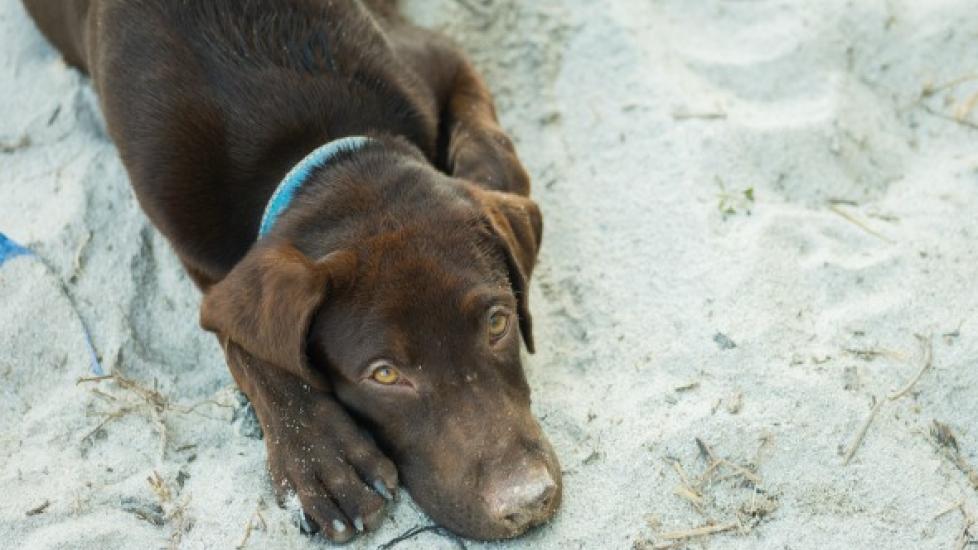Anticoagulant Poisoning in Dogs
Anticoagulant Rodenticide Poisoning in Dogs
The purpose of an anticoagulant is to prevent the coagulation (clotting) of blood. These agents are commonly used in rat and mouse poisons, and are one of the most common household poisons, accounting for a large number of accidental poisoning among dogs. When ingested by an animal, anticoagulants block the synthesis of vitamin K, an essential component for normal blood clotting, which results in spontaneous and uncontrolled bleeding.
Normally, dogs that have mild anticoagulant poisoning will not show signs of poisoning for several days, but as the poison begins to affect the system, the dog will become weak and pale due to blood loss. The bleeding may be external; this may be displayed as a nose bleed, bloody vomit, or bleeding from the rectum. Dogs can also suffer from unseen internal bleeding; bleeding into the chest or abdomen, for example, is fatal if it not diagnosed in time.
Symptoms and Types
Here are some of the most common symptoms of anticoagulant poisoning:
- Weak, wobbly, unstable
- Nose bleeds
- Blood in vomit
- Blood in stools
- Bleeding from rectum
- Bruises and hematomas under the skin
- Hemorrhages (excessive bleeding) in the gums
- Ascites (swelling of the belly) due to accumulation of blood in the abdomen
- Difficulty in breathing due to blood in the lungs (this will make a rattling or crackling sound)
Causes
The main cause of anticoagulant poisoning is from the ingestion of rodent poison. If you suspect that your dog has come into contact with rat or mouse poison, and you are seeing some of the symptoms listed above, you will need to bring your dog to a veterinarian before your pet's health becomes critical.
Keep in mind that outdoor dogs (or dogs that go outside frequently) are at risk of rodent poisoning. It might be in a neighbor's yard, in a trash bag, or in an alleyway. Dogs that engage in chasing and killing rodents may also be susceptible to this type of poisoning. Even if you do not live in an area where rats or mice are a concern, rodent poison may be used for other common suburban pests like raccoons, opossums, or squirrels.
Some of the main anticoagulant chemicals that can be found in rodent poisons (or other household products) are:
- Warfarin
- Hydroxycoumadin
- Brodifacoum
- Bromadiolone
- Pindone
- Diphacinone
- Diphenadione
- Chlorohacinone
The first kind of anticoagulants are cumulative poisons. These poisons contain warfarin and hydroxycoumadin as main anticoagulants and they require multiple feedings that take several days to kill a rodent.
The second type of anticoagulant is deadlier, killing rodents in a single serving dose rather than over time. These deadlier anticoagulant poisons contain indanedione class products, like pindone, diphacinone, diphenadione and chlorohacinone, all of which are extremely toxic. Rodenticides that contain the ingredients bromadiolone and brodifacoum, for example, are 50 to 200 times more poisonous than the kind that contain warfarin and hydroxycoumadin.
Another cause of anticoagulant poisoning in dogs is the accidental ingestion of medication. Heparin, a common drug for treating blood clotting in humans, can have a toxic effect on animals. Often, dogs that have access to medications will eat what they have found, either because the drugs are within reach, or because the drug cabinet is kept unlocked.
Diagnosis
Your veterinarian will perform a thorough physical exam on your dog, taking into account the background history of symptoms and possible incidents that might have precipitated this condition. You will need to give a thorough history of your dog's health and recent activities. A complete blood profile will be conducted, including a chemical blood profile, a complete blood count, and a urinalysis. In addition, your doctor will check the time it takes the dog's blood to clot to determine to severity of the poisoning.
If you have a sample of the poison, you will need to take that with you to the veterinarian's office; bringing samples of the dog's vomit and/or stool may also be helpful.
Treatment
If your dog is suffering from spontaneous bleeding caused by anticoagulants, the treatment will involve administering fresh whole blood, or frozen plasma, in an amount determined by the rate and volume of the animal's blood loss. Vitamin K, which is necessary for normal blood clotting, will be used specifically as an antidote, and will be given by subcutaneous (under the skin) injections, with repeated doses as necessary -- by injection or even orally -- until the blood clotting time returns to normal.
Do not induce vomiting unless you have been advised to do so by your veterinarian. Some poisons can cause more harm coming back through the esophagus than they did going down.
Living and Management
If your dog consumes a mild cumulative form of an anticoagulant, your dog may recover in a week, but if it was the lethal single dose anticoagulant, it may take up to a month.
Prevention
Anticoagulant poisoning can be prevented by keeping all poisons out of the reach of your pets. All other chemicals, drugs, and medications (especially blood thinning drugs) should also be kept out of your dog's reach -- ideally inside of a cabinet.
Help us make PetMD better
Was this article helpful?
